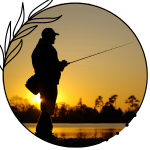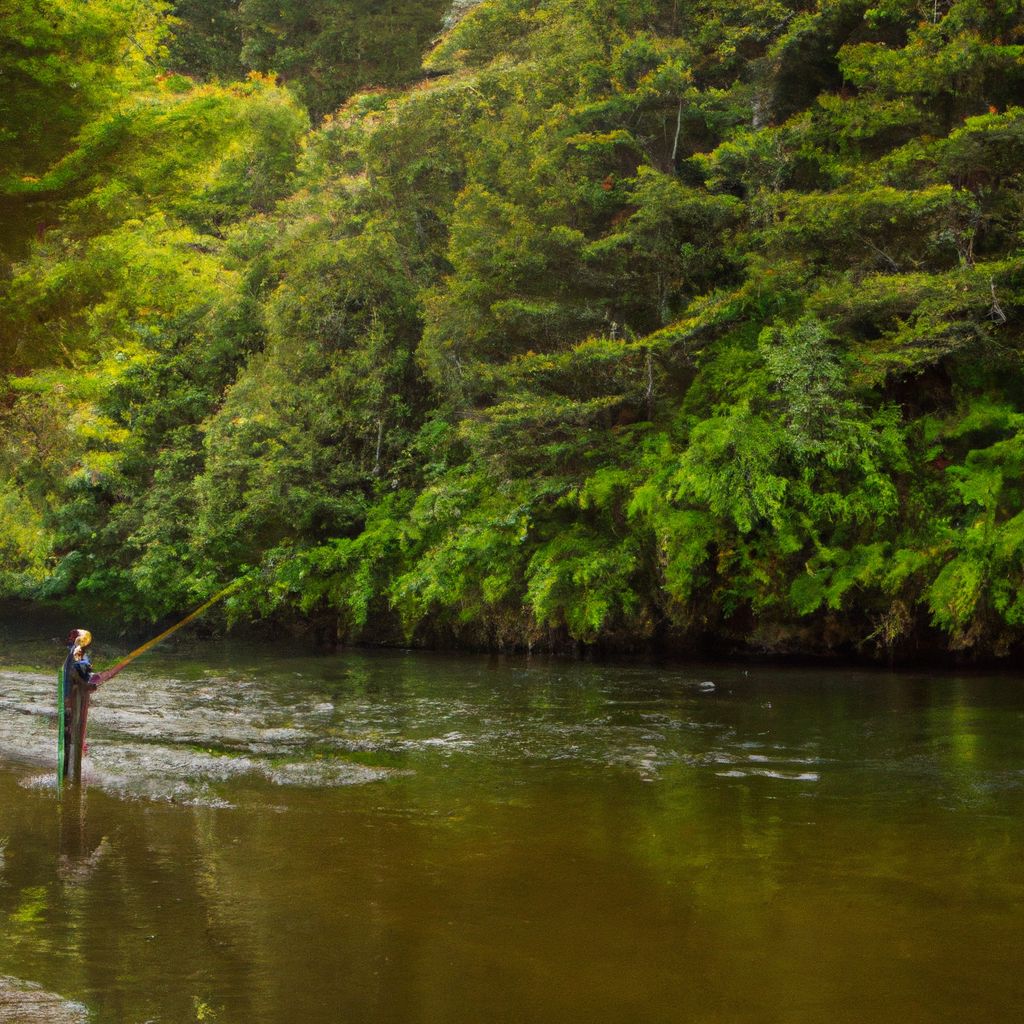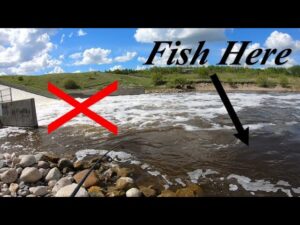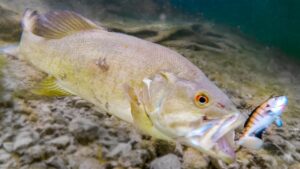Fly fishing is a captivating activity. It’s a graceful dance between the angler and nature. Casting technique is a sight to behold, with the line gliding through air. The anticipation builds until a trout strikes.
The beauty of fly fishing lies in its simplicity. Anglers must skilfully present their flies with accuracy. It’s an immersive experience that connects us with nature. We find peace in the sounds of water and leaves. Fly fishing lets us escape from the hustle and bustle of life.
In the past, fly fishing was born out of necessity. Ancient civilizations used hand-tied flies made of feathers and fur. They understood the practicality and stylishness of this art.
Nowadays, fly fishing is a recreational activity enjoyed by millions. High-tech equipment has been developed to improve the experience. But the beauty of fly fishing remains unchanged.
The Basics of Fly Fishing
Fly fishing is a skillful pursuit that needs finesse and accuracy. To be a pro at this captivating sport, learn the basics that differentiate it from conventional fishing.
Discover the components of fly fishing such as the rod, reel, and line. These tools are designed for casting light artificial flies with exactness and softness.
Then, dive into the art of fly tying; complex figures are carefully crafted to look like the natural insects that trout and other fishes eat. This ability enables you to pick flies that imitate the aquatic life in the area, boosting your chances of a catch.
Once you have the gear and knowledge, it’s time to practice your casts – like the overhead, roll, and reach cast. Practice often and focus on executing smooth movements for the best results.
Here are some helpful tips to take your fly fishing to the next level:
- Watch your environment and note any insect activity or fish rising. Matching your fly selection with these signs can increase your success rate.
- Move around water quietly and cautiously. Fish are sensitive; avoid loud noises and abrupt movements that could scare them away. If you blend into their habitat, they may take your fly.
- Invest in good quality equipment for different fishing conditions. With various rods and line weights, you can adapt quickly when the wind or water changes.
Lastly, don’t underestimate patience in fly fishing. This sport requires dedication and understanding that not every day will be successful. Embrace each outing as a chance to connect with nature and appreciate the serenity fly fishing brings.
By getting to know the basics, using these hints, and perfecting your skills, you can start a lifetime journey of fly fishing mastery. Enjoy the art, relish the moments, and let the river become an inspiring muse.
Step-by-Step Guide to Fly Fishing
Fly fishing is a skillful and captivating art. To help you master this beautiful sport, we prepared a step-by-step guide.
- Equipment: Get everything you need – rod, reel, line, leader, tippet, flies, and waders. Having the right equipment is a must.
- Location: Pick a good spot with calm water and enough fish. Different species have different preferences – research beforehand.
- Cast: Hold the rod firmly and create momentum by gently flicking your wrist. Release the line and fly with a controlled motion.
- Presentation: Imitate insects with subtle twitches to make the fly look natural.
- Patience: Observe the area and look for signs of activity. Sometimes you may have to wait for hours.
Experiment with different techniques and patterns. Select the right tippet size – too light or too heavy won’t work. Add mends to your casts for better presentation.
Let us tell you a story: A Montana angler fished a mountain stream with wild trout. After a battle, he caught a beautiful trout – a memory etched forever.
Fly fishing is more than catching fish – it’s connecting with nature. Get your gear and let yourself be transported to the enchanting realm of fly fishing. Cast your line and catch ’em – these tips will help you succeed.
Tips and Tricks for Successful Fly Fishing
Fly fishing is a skillful art! To make sure your fly fishing trip is a success, keep these tips in mind:
- Location: Pick a spot loaded with aquatic wildlife and good water flow.
- Gear: Invest in quality rods, lines, leaders, and flies.
- Casting: Learn how to cast properly – roll cast, overhead cast, sidearm cast.
- Insects: Check out what insects are in the water. Match your flies to them.
- Attitude: Remain patient and persistent. Don’t give up!
For extra success, imitate local baitfish. Plus, take note of the weather – it influences fish behavior. Now, go try out these tips! Enjoy the thrill of catching a fish and the serenity of nature. Plan your fly fishing trip now!
FAQs
| FAQ Question | Answer |
|---|---|
| 1. What is fly fishing? | Fly fishing is a method of angling that uses a lightweight fly rod, specialized lines, and artificial flies to imitate insects and other food sources of fish. Unlike conventional fishing, where the weight of the lure carries the line, in fly fishing, the weight of the fly line propels the lightweight fly. It requires skillful casting techniques and offers a unique and rewarding fishing experience. |
| 2. What are the benefits of fly fishing? | Fly fishing offers numerous benefits. It allows you to immerse yourself in nature, enjoying the tranquility of rivers and streams. It provides a challenging and engaging activity that sharpens your skills as an angler. Additionally, fly fishing promotes catch-and-release practices, contributing to the conservation of fish populations. It’s a great way to relax, rejuvenate, and connect with the natural world. |
| 3. What equipment do I need to start fly fishing? | To start fly fishing, you’ll need a fly rod, reel, fly line, leader, tippet, and flies. It’s essential to choose the appropriate gear for the type of fishing you plan to do and the species you’re targeting. A well-balanced setup ensures efficient casting and increases your chances of success. Don’t forget accessories like nippers, forceps, and a landing net to enhance your angling experience. |
| 4. How do I cast a fly rod? | Casting a fly rod involves a combination of technique, timing, and practice. The basic overhead cast consists of four steps: backcast, forward cast, pause, and follow-through. It’s crucial to maintain a smooth and controlled motion, using both your wrist and arm. With practice, you’ll develop the necessary skills to deliver flies accurately to your desired targets. |
| 5. What are the different types of flies used in fly fishing? | Flies used in fly fishing imitate various aquatic and terrestrial insects, baitfish, and other food sources of fish. They can be categorized into dry flies, nymphs, streamers, wet flies, and emergers. Each type of fly serves a specific purpose and is effective in different fishing situations. Understanding the characteristics of different fly patterns is key to successful fly fishing. |
| 6. How do I choose the right fly for fly fishing? | Selecting the right fly involves considering factors such as the species of fish you’re targeting, the time of year, water conditions, and the insect activity. Observing the natural insects present in the water and matching your fly pattern to them increases your chances of success. Experimenting with different flies and observing fish behavior will help you refine your selection. |
| 7. How can I improve my fly fishing skills? | Improving your fly fishing skills requires practice, observation, and continuous learning. Focus on mastering casting techniques, understanding fish behavior, and honing your fly presentation. Study the entomology of the waters you fish, learn from experienced anglers, and take advantage of resources such as books, videos, and fly fishing classes to enhance your knowledge and abilities. |
| 8. What is the best time of day to fly fish? | The best time of day for fly fishing can vary depending on several factors, including the species of fish you’re targeting, water temperature, weather conditions, and insect activity. Generally, early mornings and evenings tend to be productive, as fish are more active during these times. However, it’s essential to adapt to the specific conditions of the water you’re fishing. |
| 9. How do I practice catch-and-release fishing responsibly? | Catch-and-release fishing is an important conservation practice. To practice it responsibly, handle fish with care, using wet hands or a landing net to minimize stress and damage to their protective slime layer. Avoid keeping fish out of the water for extended periods and use barbless hooks to facilitate easier hook removal. Follow local fishing regulations and handle fish gently to ensure their survival. |
| 10. Can I fly fish in saltwater? | Absolutely! Fly fishing is not limited to freshwater; it can be an exciting pursuit in saltwater environments as well. Saltwater fly fishing targets species such as bonefish, tarpon, permit, and striped bass. It requires specialized gear, including corrosion-resistant equipment and flies designed for saltwater conditions. Exploring saltwater fly fishing opens up a whole new world of angling possibilities. |
Conclusion
In conclusion, the art of fly fishing offers a gateway to a world of natural beauty, tranquility, and adventure. Whether you’re a novice angler or an experienced enthusiast, embracing this captivating sport brings with it a host of rewards. From the joy of mastering casting techniques to the satisfaction of tying your own flies, fly fishing presents an opportunity to connect with nature on a profound level.
By choosing our services, you gain access to a team of passionate and experienced fly fishing professionals. We are dedicated to providing top-quality guidance, gear, and resources to enhance your fly fishing journey. With our expertise, you can embark on unforgettable fishing excursions, honing your skills and creating lasting memories.
Experience the thrill of presenting a perfectly tied fly on a crystal-clear stream. Immerse yourself in the rhythm of the river and witness the magic of a trout rising to take your offering. With our comprehensive services, you’ll have everything you need to make the most of your fly fishing adventures.
Discover the art of fly fishing and embark on a journey of exploration, learning, and personal growth. Let us be your trusted partner in this remarkable pursuit.





